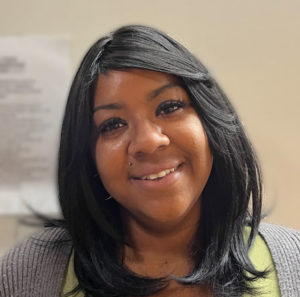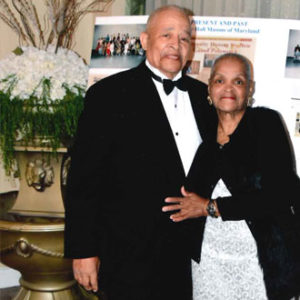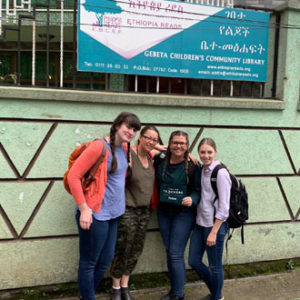by The Children's Guild | Nov 16, 2022 | Employee's Stories, News, Success Stories
Instead of focusing on how apprenticeships change lives and help people find themselves, how about what they can do for those companies and organizations that take them on? Today, many employers in tech, healthcare, and other industries are building their workforce with the help of apprenticeship programs.
APPRENTICESHIPS ARE NOT JUST FOR THE TRADES, ANYMORE
Proven in carpentry, electrical, plumbing, and other trades historically, apprenticeships are now working for hospitals, cyber companies, IT and networking firms, manufacturing, finance, and more. All have complex workforce challenges and must keep up with the demands of rapid advancements, and apprenticeship is a best practice for recruiting, training, and retaining skills and talent.
Transportation, health care, hospitality, and food sectors have had the highest numbers of job openings in 2022. Every state feels the impacts of worker shortages. Hiring apprentices have become a practical solution for many organizations’ needs.
BEYOND THE WIN-WIN – THE RIPPLE EFFECT
Apprenticeships are a proven recruitment strategy for home-grown talent in a tight labor market and are usually good news stories for companies.
But apprentices also attract others with their success, paying success forward by hiring other apprentices as they climb the ladder. In September, the Biden-Harris Administration launched the Apprenticeship Ambassador Initiative, formalizing this ripple effect through a national network of more than 200 employers and industry organizations, labor organizations, educators, workforce intermediaries, and community-based organizations committed to strengthening and diversifying apprenticeship.
SHAYNA ESTRELLA IS PAYING IT FORWARD
With a Master’s in Forensic Science and High Technology Crime, Shayna wanted a career in tech. But she found that the IT industry looks for industry-recognized certifications, most of which are expensive and time-consuming. Shayna had a family to support. By working and learning through pre-apprenticeship training and two other apprenticeship programs, Shayna now runs the IT and computer labs and works with students at St. Francis Neighborhood Center, a nonprofit group in Baltimore. Her community feels the ripple, as Shayna identifies other talents, reaches back, and helps bring others along on their own career journeys.
that the IT industry looks for industry-recognized certifications, most of which are expensive and time-consuming. Shayna had a family to support. By working and learning through pre-apprenticeship training and two other apprenticeship programs, Shayna now runs the IT and computer labs and works with students at St. Francis Neighborhood Center, a nonprofit group in Baltimore. Her community feels the ripple, as Shayna identifies other talents, reaches back, and helps bring others along on their own career journeys.
“Shayna’s like a one-woman recruitment ad for us,” says Torbin Green, Executive Director of the St. Francis Neighborhood Center. “Finding and retaining people in the local community is the best road for us to grow.”
THANKS TO ORGANIZATIONS LIKE TRANZED APPRENTICESHIPS
The Children’s Guild’s TranZed Apprenticeships is a nonprofit registered provider that sponsors and manages apprenticeship programs in several occupations across the country, such as IT, cyber security, healthcare, and education. Registered with the US Department of Labor, programs are all approved for curriculum, rigor, and quality.
Working with other current and former apprentices has fostered a real sense of community among the St. Francis team. Upper management and more tenured team members are eager to help and support new apprentices because they have been in their shoes themselves.
EMPLOYER AND APPRENTICE SUPPORT
Through TranZed, The Children’s Guild works with employers to understand their hiring needs and recruit candidates who meet their skills and company culture. Apprentice candidates are driven, eager to learn, and ready to work. TranZed experts are always available to help employers, associations, and employees when needed, and help employers build, register, and sponsor programs. TranZed also manages record-keeping, progress tracking, and compliance management, taking that load off employers.
The program helped Shayna big time. In partnership with Baltimore Cyber Range, TranZed Apprenticeships prepped and covered the expenses of both the CompTIA A+ and Network+ certifications for her, opening industry doors and many new opportunities.
AN IMPORTANT NEW ADDITION TO THE MODERN WORKFORCE
“Apprenticeships are a crucial component to closing the skills gap and are rapidly becoming key additions to the modern workforce,” says Erin Finnegan-Smith, Managing Director of Workforce Development for The Children’s Guild.
Since its launch in 2016, TranZed has expanded its offerings from IT and Cyber to Education and Healthcare. TranZed has placed and supported the placement of an increasing number of apprentices across the country by managing and consulting with other employers, associations and organizations looking to sponsor programs.
“Tried and tested for decades, the apprenticeship model works, and non-traditional companies are opening their eyes to upscaling and building their workforce today rather than buying it,” says Finnegan-Smith.
NOVEMBER 14 BEGINS NATIONAL APPRENTICESHIP WEEK
The Children’s Guild and TranZed Apprenticeships are celebrating the Eighth Annual National Apprenticeship Week from November 14-20, 2022. During this nationwide celebration, industry, labor, equity, workforce, education, and government leaders host events to showcase the successes and value of apprenticeship in rebuilding the economy, advancing racial and gender equity, and supporting underserved communities.
Apprenticeship is a proven, industry-driven training model, providing a vital pipeline of talent that can help to address some of America’s pressing workforce challenges such as rebuilding our country’s infrastructure, addressing critical supply chain demands, supporting a clean energy workforce, modernizing our cybersecurity response, and responding to care economy issues.
DISCOVER MORE ABOUT APPRENTICESHIPS AND HOW THEY WORK
An official website of the US Government, ApprenticeshipUSA is an industry-driven career pathway where employers develop and prepare their future workforce, and individuals obtain paid work experience, classroom instruction, and a nationally-recognized credential. Another is American Job Centers, where people can search for jobs, find training, and answer other employment-related questions.
Employment in healthcare occupations is projected to grow 15% through 2029, faster than all other occupations. Find out how TranZed can help with CNA pre-apprenticeship and Patient Care Technician programs >
Want to learn more? [email protected]
by The Children's Guild | Sep 19, 2022 | News, Success Stories
Another Level of Love, Compassion & Need!
There is a much greater level of foster care needed and the need is growing. The answer is Treatment Foster Care (TFC. Treatment Foster Care, or therapeutic foster care, requires parents with specialized training to care for kids with more serious emotional, behavioral, or social challenges because of past trauma. It gives children in out-of-home care a safe and nurturing home in a more structured environment than typical or regular foster care and offers a cost-effective alternative to residential treatment.
A CLOSER LOOK AT FOSTER CARE IN THE U.S.
According to recent federal data, more than 400,000 children now live in foster care in the United States, from infants to 21 (in some states). Kids ages 1 to 5 make up the largest share (30% in 2020) of children entering care. The average age is about 8 years old, and there are more boys than girls. Of those kids, about 117,000 are waiting to be adopted.
In 2020, 213,964 children under 18 entered foster care in the United States. Kids cycle in and out of the foster care and adoption systems but usually spend about a year in foster care. More than half are eventually reunified with their parents or caregivers. About 25 percent are adopted, many by foster parents. The goal of most foster care placements is to provide a temporary home that gives children and teens a safe place to live when their parents or primary caregivers are going through a crisis; while meeting emotional, physical, educational, medical, and recreational needs; and to safely reunite them with their families.
Many of these children have challenging behaviors because they have experienced some form of trauma, As a result, they exhibit emotional fragility, impulsive behavior, learning disabilities, Loss and Attachment Disorder, post-traumatic stress, and oppositional and verbally aggressive behaviors among others.
TREATMENT FOSTER CARE GOES FURTHER FOR THOSE CHILDREN WHO NEED IT
Treatment Foster Care serves children who have complex problems due to experiencing severe trauma and their behaviors are difficult for regular foster homes to manage. Many children in treatment foster care have failed in traditional care because parents do not possess the training and understanding needed to care for the behaviors exhibited. However, Treatment Foster care parents are required to help children with trauma issues and are trained in being trauma-informed and to provide a healing environment. Therapeutic foster care parents also learn improved coping skills and how to manage some of the most challenging scenarios as part of training.
MEET SOLACE – WHAT A DIFFERENCE IN JUST THREE YEARS
For a wonderful TFC success story, meet Solace. When he entered treatment foster care, his obstacles included social anxiety, depression, lack of motivation and hopelessness. He had difficulties maintaining employment, but with the strong support of his foster mom, foster family and mentor Maurice Harris, Solace has maintained regular employment for the last two years.
“Being separated from my family is depressing and it still bothers me at times,” he says. “But being in care has made me realize that your family is who you make them to be.”
“I’ve been blessed with a loving foster mom who never once implied that I was a foster child. She made me feel like one of her own and makes me feel like a real sibling along with her own kids. My foster family taught me that rather than looking down on someone, it’s better to give them a hand up. I will always remember the importance of giving and giving back,” Solace added.
Over the last year, he worked in the exit youth program called, Ready by 21, got his driver’s license, bought his own car, and will be attending a trade school for plumbing. The conflict resolution and other training he received from TFC gave him skills that he says he will carry for the rest of his life.
“For a student who struggled with emotional and social issues just three years ago, these are extraordinary achievements,” says Maurice Harris. “Solace is a considerate young man who shows concern for others and has a pleasant disposition. He’s the kind of young man who has learned to care for others’ needs above his own.”
Solace just earned a Maryland Association of Resources for Families and Youth (MARFY) achievement award, and was honored during the annual MARFY dinner and awards ceremony.
TFC works!
SEE HOW BEING A TREATMENT FOSTER PARENT WORKS AT THE CHILDREN’S GUILD
The Children’s Guild (TCG), whose mission is to provide individualized transformational experiences to ensure children, families, and communities thrive, is one of many organizations that work in treatment foster care.
“We are always looking for the special parents and families willing to provide a special level of care to children in need in Baltimore City and County, and Anne Arundel, Harford, and Howard counties,” says Joy Zollinger, Managing Director, Residential Services for The Children’s Guild “With all our parents, we offer professional development and ongoing training, and our program adheres to the best practices and program standards of the Family Focused Treatment Association” (FFTA). FFTA has listed over 495 member organizations working in treatment foster care across North America, including TCG.
Full support from TFC professional staff means weekly contact with families and the foster youth in the home. These staff members are responsible for the monitoring of the placement and assisting with providing placement stability. Staff not only provide support and guidance for the foster youth, but for the foster parents as well. This support includes 24/7 on-call services, case management, coordinating services for children (such as therapy, psychiatry, etc.), and implementing therapeutic interventions when necessary. “We provide respite services for parents and a tax-free stipend for foster childcare. Also, families receive training, supervision, and ongoing support from local organizations.” added Zollinger.
Children are still in need of safe and nurturing foster homes during this critical time, and The Children’s Guild is actively recruiting treatment foster parents. TCG offers regular informational meetings via Zoom where those interested can find out more about our fostering program and ask questions.
For more information about Treatment in Foster Care or to become a Foster Parent, please go to our website [email protected] or contact us at 443-829-5684
“Please join us for our next informational meeting, even if you’re just curious!” says Kay Brazile, MLT, BSc, Admission Coordinator.
IT’S A BIG BUT REWARDING JOB. ARE YOU UP FOR IT?
It is challenging to be a therapeutic foster parent, but also extremely rewarding. Foster parents who choose to provide care to higher needs kids can make incredible differences in the lives of children who so desperately need it.
It takes a tremendous amount of patience, resilience, creativity, resourcefulness, humor, and love. When these are provided to a troubled child, healing begins. Becoming a treatment foster care parent is a special gift you can give to a child in need, as well as yourself.
Make a difference in the life of a child—Become a Therapeutic Foster Parent!
 2023 was an inspiring year for special education at The Children’s Guild. We witnessed our students overcome hurdles and achieve academic and personal milestones. Our partnerships with foundations, government partners, donors, volunteers, and community organizations helped us provide individualized transformational experiences for the children and families we serve. Explore our successes in special education from 2023 in our recently released Annual Report.
2023 was an inspiring year for special education at The Children’s Guild. We witnessed our students overcome hurdles and achieve academic and personal milestones. Our partnerships with foundations, government partners, donors, volunteers, and community organizations helped us provide individualized transformational experiences for the children and families we serve. Explore our successes in special education from 2023 in our recently released Annual Report. that the IT industry looks for industry-recognized certifications, most of which are expensive and time-consuming. Shayna had a family to support. By working and learning through pre-apprenticeship training and two other apprenticeship programs, Shayna now runs the IT and computer labs and works with students at St. Francis Neighborhood Center, a nonprofit group in Baltimore. Her community feels the ripple, as Shayna identifies other talents, reaches back, and helps bring others along on their own career journeys.
that the IT industry looks for industry-recognized certifications, most of which are expensive and time-consuming. Shayna had a family to support. By working and learning through pre-apprenticeship training and two other apprenticeship programs, Shayna now runs the IT and computer labs and works with students at St. Francis Neighborhood Center, a nonprofit group in Baltimore. Her community feels the ripple, as Shayna identifies other talents, reaches back, and helps bring others along on their own career journeys.











